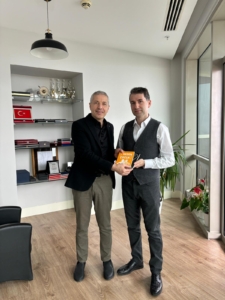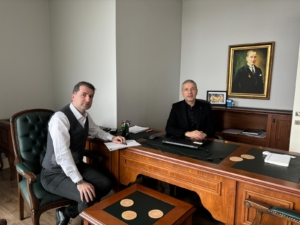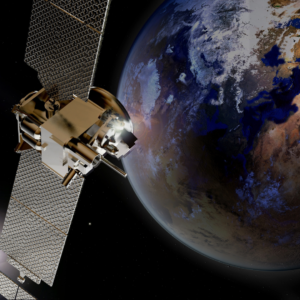TRT E-BANDROL AND IMPLEMENTATION PRINCIPLES
BANDROL; It is the physical indicator of the tax collected from all electronic devices that are used to receive radio and TV broadcasts in any environment, based on the Turkish Radio and Television Revenues Law No. 3093, and that allow you to watch TV or radio broadcasts without requiring any additional equipment.
TRT-Bandrol fee for TV is 16% of the product price. This tax was initiated in 1986 during the term of the late Mr. Turgut Ozal, Prime Minister of the 45th Government of the Republic of Turkey.
In 2016, TUYAD explained the e-Bandrol issue to TRT and in December 2017, this application was approved for use by the General Manager at that time, İbrahim Eren.
However, e-Bandrol was misunderstood. e-Bandrol would be implemented as an electronic bandrol and would provide smart communication and smart tracking by matching with the integrated circuit inside the television. However, later the application switched to the label bandrol method and now e-Bandrol, which is provided to companies only with a declaration from the KEP system under the name of e-bandrol, continues to be used as a label bandrol.
According to the capacity report to be submitted by taxpayers producing domestically for the use of e-Bandrol in order to benefit from the e- Bandrol application; 500,000 units per year for televisions is the number that must be in the capacity report.
This capacity is not required to be used at the end of the year.
If the e-Stamp serial number is not found during the inspections (the serial number is not found in the devices within the scope of e-Stamp or the serial number/IMEI number/chassis number does not match an e-Stamp serial number when entered into the system); the device is considered to have been sold without a stamp and an administrative fine of twice the stamp fee is imposed in accordance with Article 6 of Law No. 3093. In other words, the fine is twice the amount of the sales invoice of the device.
In our TUYAD studies, we have always struggled to prevent unfair competition and the most important element was the TRT-Bandrol application. How many manufacturers use this application and which application principles constitute fair competition? TRT always inspects tradesmen in field inspections in the same situation and the problem is always the small tradesmen.
Finally, we can say that; although e-Bandrol makes it easier for TRT institution in the implementation of TRT-Bandrol, it is not enough to eliminate unfair competition.
Although the TRT-Bandrol fee is paid, only the physical stamp is taken and not affixed to the goods, or as in the e-Standard application, the TRT-Bandrol fines issued in the amount of twice the stamp fee due to failure to make the necessary notification within 10 days are an indication of how disproportionate, unfair and unjust the fines are.
Preventing unfair competition will be possible by constantly monitoring the TRT-Bandrol fees, which are already very high, at reasonable levels and at equal rates.









